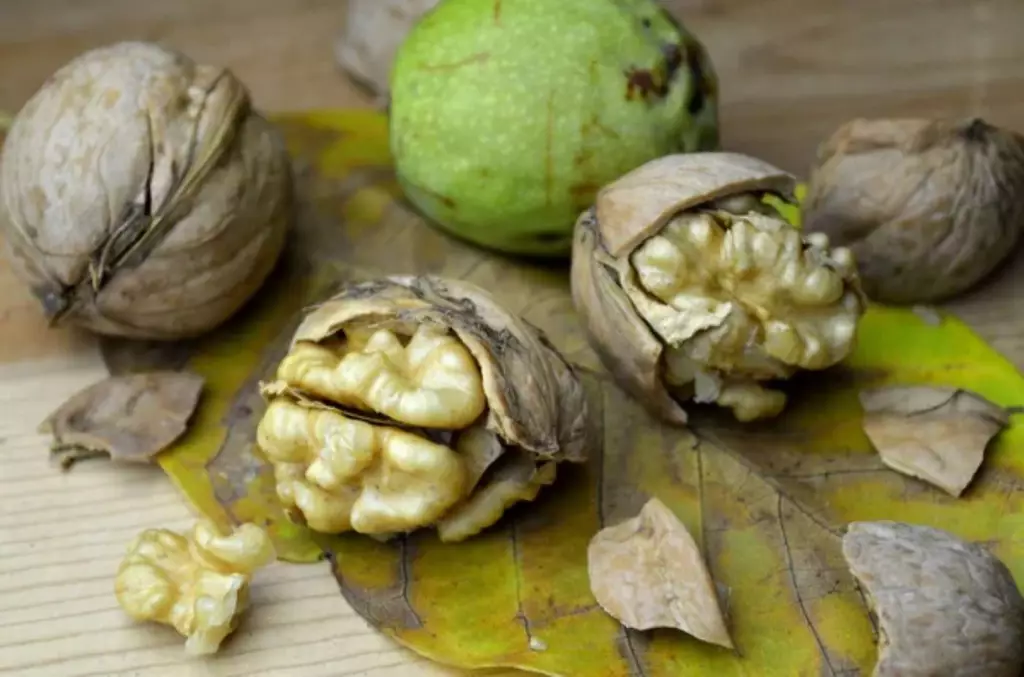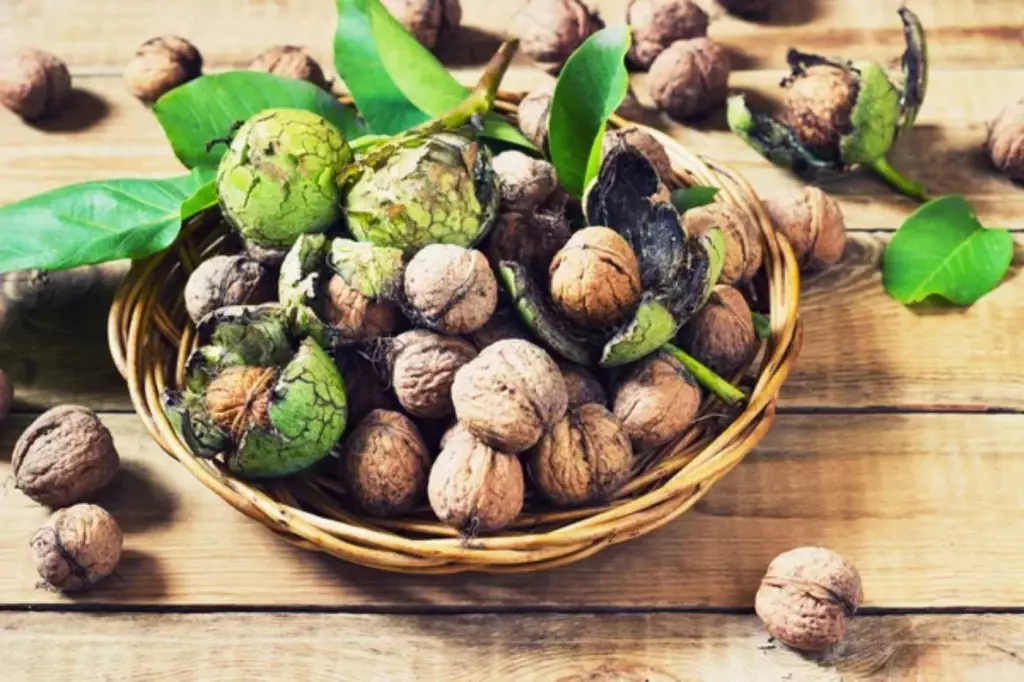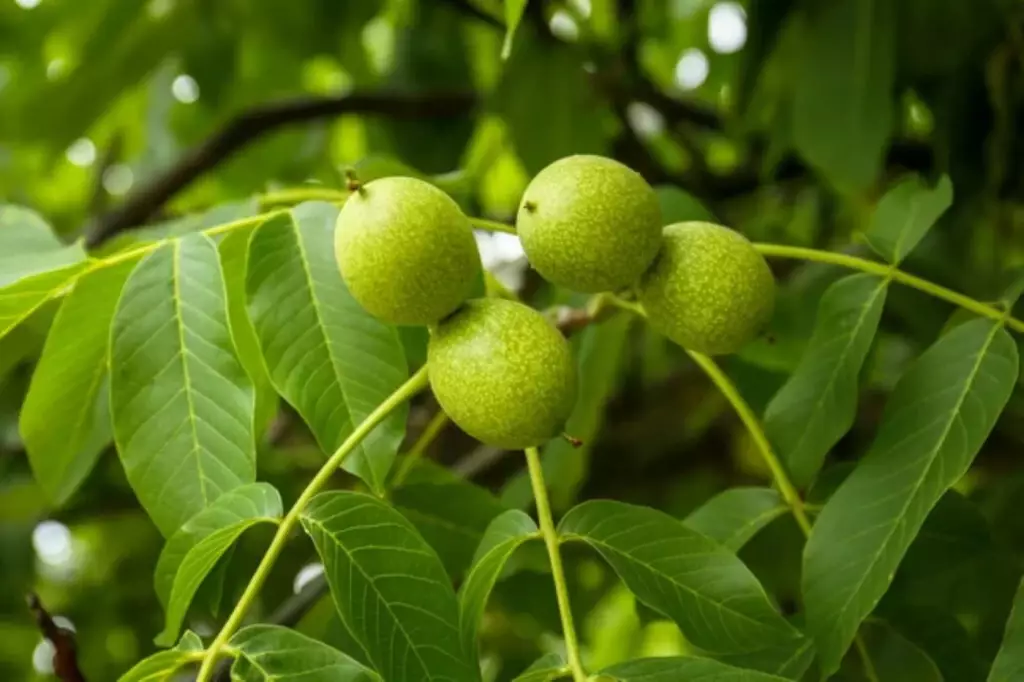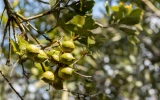How Many Pounds of Walnuts per Tree on Average?
When you're growing walnut trees, it's natural to wonder how many pounds of nuts you can expect per tree on average. Walnut trees begin producing abundantly at 7 to 8 years old, and some of them naturally produce more heavily every other year. In this article, we'll explore the average yield of walnuts per tree and the factors that affect your potential harvest from these nut trees.
A mature walnut tree produces between 50 and 80 pounds of unshelled nuts every year, but this depends on factors like tree age, environmental conditions, and the species of walnut trees. Black walnut trees can produce 50–60 pounds of nuts per tree, whereas English walnut trees yield about 50–80 pounds per tree.
One of the main challenges for walnut production is their tendency to have an alternate bearing cycle. Let's learn more about how this phenomenon works as we explore the challenges that walnut trees face in their nut production cycle.
Knowing the average pounds of walnuts produced per tree will be crucial in forecasting your farm's yield and planning for its sustainable growth and success, in your venture of starting a walnut farm from scratch.
Summary
- On average, a mature walnut tree produces between 50 and 80 pounds of unshelled nuts every year.
- The average nut yield per walnut tree varies depending on the species of walnut trees you are growing. Black walnut trees can produce 50–60 pounds of nuts per tree, whereas English walnut trees yield about 50–80 pounds per tree.
- The yield of walnuts per tree also varies depending on the age of the tree. Generally, as the tree matures, yields will increase.
- Several factors can impact the nut production of walnut trees, including tree age, climate, and even pollination practices.

On this page:
Average Nut Yield from a Walnut Tree
In general, a mature walnut tree produces between 50 and 80 pounds of unshelled nuts every year, depending on factors like tree age, health, and environmental conditions. Most species of walnut trees begin producing nuts at 4 - 5 years after planting, but abundant production starts at 7 to 8 years old.
They can take up to 15 years to reach full maturity. Some walnut trees naturally produce more every other year, which might affect your annual harvest. The average nut yield per walnut tree varies depending on the species of walnut trees you are growing and the age of the tree.

Walnut yield by tree type
There are different types of walnut trees, each with different yield potentials. The two most common varieties are black walnuts and English walnuts.
On average, black walnut trees can produce 50–60 pounds of nuts per tree, whereas English walnut trees yield about 50–80 pounds per tree.
Below is a table that shows the average weight of walnuts that can be harvested from different species of these trees:
| Walnut Species | Average Weight of Walnuts |
|---|---|
| Black Walnut | 50–60 pounds |
| English Walnut | 50–80 pounds |
| Persian Walnut | 50–60 pounds |
| California Walnut | 40–45 pounds |
| Heartnut | 40–50 pounds |
Average yield depending on the age of the tree
As the tree matures, yields generally increase. For example, Chandler Orchards suggests that projected walnut yields can be around 1,320 lbs per acre plot, or around 1200 kg per hectare plot, in 3 to 6 years of planting.
In the 2020-2021 USDA report, the US walnut crop was estimated to be at 1.56 billion pounds (780,000 short tons), which is 19% above the previous year.
The table below shows the approximate weight of walnuts that can be harvested during the different age ranges of a walnut tree:
| Age of Walnut Tree | Approximate Weight of Walnuts (per tree) |
|---|---|
| 3–5 years | 5–10 pounds |
| 6–10 years | 20–50 pounds |
| 11–20 years | 50–200 pounds |
| 21–30 years | 200–400 pounds |
| 31+ years | 400+ pounds |
You may need to keep in mind that these are average numbers, and actual yields for your walnut trees will still depend on the specific conditions in your orchard.
Factors Affecting Walnut Production
Some of these factors include tree age, climate, and even pollination practices. You may want to consider these factors when establishing and managing your walnut orchard for optimum yields.
The age of a walnut tree affects the yield of walnuts
As a tree grows, it becomes larger and more mature, which allows it to produce more nuts. In the early years of a walnut tree's life, it will typically produce a small number of walnuts, as it is still developing its root system and establishing itself in the soil.
During this time, the tree will also be focusing much of its energy on growing taller and developing its branches and leaves rather than on producing nuts.

As the tree reaches maturity, typically around 10–15 years of age, it will begin to produce more walnuts each year. This is because the tree has developed a strong root system and has established itself in the soil, which allows it to absorb more nutrients and water.
Additionally, the tree will have developed a larger and more robust canopy, which allows it to produce more leaves and photosynthesize more energy.
As the tree continues to age, it will typically produce even more walnuts each year, as long as you provide proper care and maintenance. However, there is a limit to how much a single tree can produce, and eventually, the yield may begin to decline as the tree becomes less vigorous and productive.
Climate factors affect walnut production
Walnut trees thrive in climates with moderate temperatures and well-defined seasons. They prefer full sunlight and well-draining soil.
These trees do best in USDA Hardiness Zones 4–9. While they can withstand cold winters, extremely low temperatures can damage the trees and affect their overall productivity.
| Climate Requirement | Effect on Yield of Walnuts per Tree |
|---|---|
| Temperature | Too high or low can reduce nut size and damage tree |
| Rainfall | Too much or little can reduce nut quality and quantity |
| Humidity | High humidity can increase the risk of fungal diseases, and low humidity can cause nuts to dry out |
| Wind | Strong winds can damage trees and reduce nut production |
Allowing cross-pollination improves nut production
Walnut trees are monoecious, meaning they have separate male and female flowers on the same tree. In many cases, a single tree can self-pollinate, although distances between trees and the presence of other walnut varieties can improve pollination rates and overall nut production.
You may want to plant your walnut trees 28 x 28 feet apart to allow for cross-pollination, good air circulation, and better light exposure to increase your nut yield.
Challenges in Walnut Production

Alternate bearing phenomenon in walnut trees
Alternate bearing is a common issue with walnut trees. This phenomenon occurs when a tree produces a heavy crop one year and a much lighter crop the next. This can be frustrating for you as a grower, especially if you are aiming for consistent yields.
However, you may want to take advantage of this cycle by properly managing your tree's health and nutrients. Maintain a healthy environment for your trees, so you can minimize the impact of alternate bearings and improve your overall yield.
Diseases and pests can cause problems in walnut production
Some common diseases affecting walnut trees include blight and root rot. To prevent these issues, you may want to guarantee that your farm has proper drainage. You may also want to employ proper spacing to avoid crowding your trees.
Strive to regularly inspect your trees for any signs of pests like walnut husk flies or codling moths. You might also want to consider having an integrated pest management strategy that can help you control these threats and prevent damage to your walnut tree.



